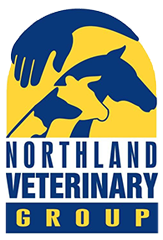Cows not treated at calving may still benefit from a treatment with EPRINEX®
It is well recognised that body condition at mating is a major factor influencing reproductive performance in cows. This influence is most obviously demonstrated in first-calf heifers, who are still growing, but also applies to adult cows. Several overseas studies in both beef and dairy cattle where anthelmintics have been administered close to calving or prior to mating have recorded a positive effect on reproductive performance1,2,3,4.
In New Zealand, a large trial using EPRINEX has shown the benefits possible from a treatment shortly after calving5. The heifers treated with EPRINEX showed a reduced calving to conception interval of 12.9 days. Treated heifers required 15% less matings, 19.9% increased pregnancy to first service and an 11% increased pregnancy rate overall. These advantages will beneficially impact on the lifetime performance of the treated heifers and offer potential production advantages as these heifers calve-down early to their second lactation. A more recent Canadian trial, also using EPRINEX at calving, showed similar reproductive benefits in both heifers and adult cows 6.
Another recent trial looked at grazing behaviour in adult cows and heifers treated between 6-17 weeks into lactation with EPRINEX7.
Treated cows spent approximately 1 hour more time grazing than untreated herdmates. Measurements over 28 days, showed liveweight gains of + 1.7kg and +15.5kg, in treated cows and heifers respectively, along with increases in body condition score. Statistical significance was shown for all these results.
In addition there was a significant increase in milk yield in treated cows.
This suggests the benefits of treatment can also be realised in cows treated some time after calving.
Parasite control programmes were identified as a critical part of achieving satisfactory heifer performance in a paper presented at the combined Australia & New Zealand Dairy Cattle Vets Conference in 20038. Numerous studies, in heifers, have observed a relationship between body weight at first calving and first lactation milk yield9.
When it comes to parasite control no product can give you the level of assurance that is inherent in every dose of EPRINEX. EPRINEX has been trialed, and demonstrated persistent activity, against a wider range of individual worm species, under a wider range of farming conditions, than any other. It is formulated specifically to enhance performance, using animal friendly, ingredients.
Eprinex kills faster, and for longer, giving more relief from the growth-limiting effects of parasite challenge.
Don’t take a chance on your herd’s future. Give it your best shot: EPRINEX.
References
- Wohlgemuth K. et al. 1989. The Bovine Practioner 24: 61-66
- Guichon P.T. et al. 1992. Proc. XVII world buiatrics congress 1: 17- 22
- Holste J.E. et al. 1986. Modern Veterinary Practice 67: 462-464
- Larson R.L. et al. 1995. Theriogenology 44: 189-197
- Mcpherson et al. 2000 ; Proc. ANZ DCV Conference 242
- Sanchez et al. Prev Vet Med 2002 ; 18;56(2) 165-77
- Forbes A.B. et al. 2004. Veterinary Parasitology 125: 353-364
- Lean I.J. et al. 2003. Hazards Anaylsis Critical Control Point Approach to improving reproductive performance in lactating dairy cows. Proc. ANZ combined dairy cattle vet. conf. 429-444.
- Hofman P.C. 1997. Journal of Animal Science 75 (3) 836-45)
Thanks to Merial for the use of this article.


